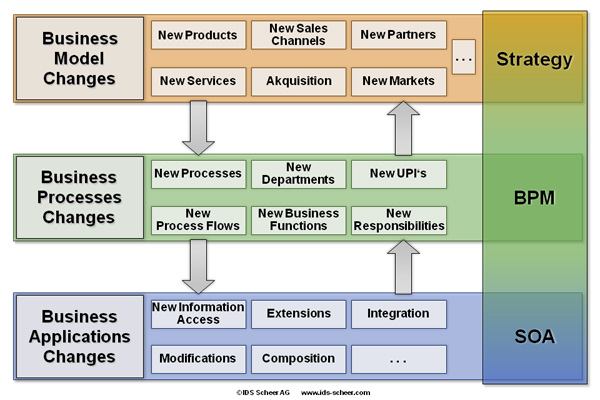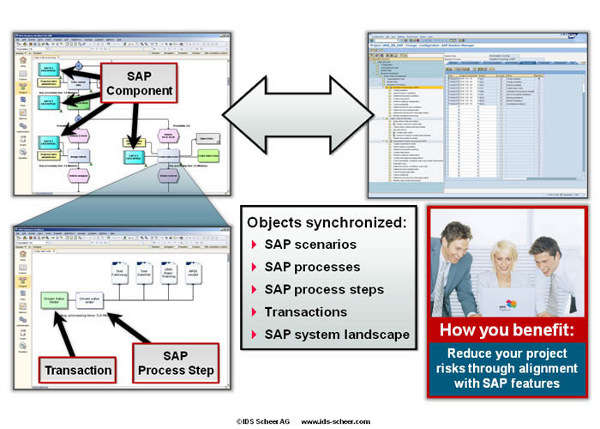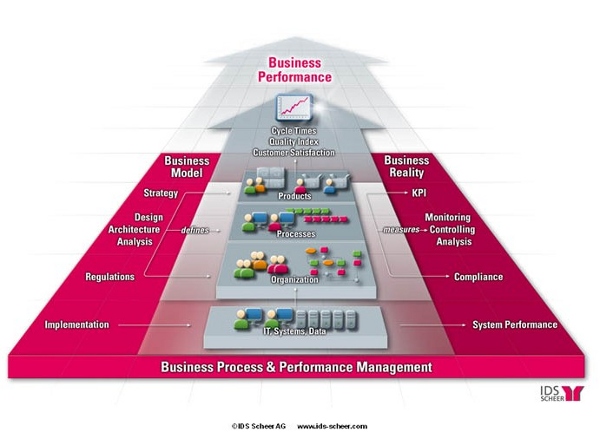The automatic reaction of businesses to the current economic crisis is to seek ways of cutting costs. In many cases, however, they do so blindly and without really knowing whether such measures will deliver the desired results, i.e., allow them to survive. In my view, these organizations are going about it the wrong way: the key to survival and maximizing market potential are investment and/or developing growing business areas. At first sight, the idea of spending money in times of crisis appears counter-intuitive, but making the right investment at the right time can ensure survival. To do this, you need to consider where and how the money can best be put to use - which is only possible if you know your value-adding processes inside out and have identified existing weaknesses.
But how can you gain the necessary visibility into your business? In recent years, companies have launched a range of diverse initiatives to create appropriate mechanisms for corporate management. At the management and controlling level, financial indicators were used for planning, profitability, and cost management purposes. User departments deployed modeling tools to define parameters for operational processes, which were then implemented by IT. Silo solutions for capturing and analyzing data from operational systems are also still in use today. What has been lacking, is a way of combining these different concepts to enable effective management at the strategic, tactical, and operational level.
BPM as a driver of business success Help is at hand!
As well as facilitating transparent processes, Business Process Management (BPM) solutions deliver answers to questions about efficiency (doing things right) and effectiveness (doing the right things). Especially in the current crisis, the ability to quickly and precisely analyze a company's business is vital. Talking to many of our customers, it's clear to me that organizations want to:
• better manage their processes
• optimize their value-adding processes
• improve monitoring of ineffective processes and replace them with better processes
• tap into new business areas through new, innovative processes.
A recent Gartner note by Elise Olding (published 12 March 09) called "It's a Matter of Survival: Use BPM to Drive Out Costs" highlights the importance of BPM when facing challenging conditions. In response to the question: "Are you being pressured to reduce your BPM budget or disband your BPM initiative as a result of economic pressures?", 95% of customers said that their BPM projects had not been affected. Indeed, the majority reported that there was more management support than ever for such projects. The key is to be proactive, rather than just reacting to events. Let me use two examples to show how integrated BPM solutions, such as ARIS, can provide the necessary support.
BPM with ARIS
BPM comprises four phases: process design, implementation, execution, and monitoring. Particularly in the design and monitoring phases, it's crucial to distinguish the business view from the technical view. But why? Although BPM involves both technical and business aspects, I would emphasize that focusing solely on the technical implementation of processes is the wrong thing to do.
Fig.1: Business model changes at the strategy level impact on the BPM and process execution levels
It's the business view that should be given prominence. What sense is there in modeling and implementing a process that, although technically faultless, is not used anywhere in the enterprise or cannot be properly adopted by employees? None. This is still a major issue with SAP implementations. ARIS takes a process-oriented approach to SAP implementation. Based on years of working closely with SAP, we have developed reference processes in ARIS that cover all an organization's core processes, plus the supply chain. Businesses can leverage this huge store of process knowledge to define their core processes using process maps. Synchronization with SAP Solution Manager enables creation of exactly the right business process environment in the SAP system. The result: workflows without any redundancy.
Fig.2: Align business requirements with the functionalities of your SAP system via synchronization of ARIS with SAP Solution Manager
By following this link to our ARIS TV on ARIS Community, you get a high-level introduction why it is so important to focus on Business Process Management.
Furthermore, if you want to get the big picture on how BPM tools from IDS Scheer and SAP can be combined for an optimized BPM approach, please watch the following podcast interview with Thomas Volmering, one of SAP's experts in this field:
Interview with Thomas Volmering
In the next interview with Ann Rosenberg, BC Global Practice Owner for Business Process Management, Senior Strategic Business Process Management Consultant at SAP, and author of the book "Roadmap to Business Process Management", you can learn how to develop a BPM roadmap and integrate BPM with SAP's Enterprise SOA approach:
You find more interesting ARIS TV episodes on our ARIS Community.
Business Process Management becomes Process Intelligence Management
The business view is also the key to success when it comes to process monitoring. Although monitoring technical process performance provides a basic platform, precise knowledge of how to optimally use all critical processes in the overall context of the organization, i.e., for business performance, is essential to corporate success.
Fig.3: Comprehensive business performance with various aspects at the strategic, tactical, and operational level
Merely collecting financial KPIs on a data-driven basis without linking them to processes doesn't actually boost efficiency or customer satisfaction, though. Past financial data or KPIs likewise offer little insight into the cause or resolution of impending problems. Process-oriented performance management tools are required that enable day-to-day business management at the strategic, tactical, and operational level. Combining Business Process Management and traditional Business Intelligence technologies creates a new generation of tools that allow performance analysis and optimization directly in operational processes.
These tools closely link the analytical functionalities of traditional BI concepts with business process monitoring. This means that analytical components are integrated into process execution to control it as efficiently as possible - partly without human intervention - and support decision-making. In addition, analysis techniques are used to measure and analyze process performance.
One point shouldn't be overlooked here, and that is acceptance of such new tools by non-expert users. Process intelligence systems need to have simple configuration and integration technology (e.g., through mashups) and thus allow smooth integration into the individual work environment.
These two examples reveal the playback qualities of comprehensive BPM solutions, such as ARIS, and demonstrate that organizations of every shape and size are really excited by the potential of BPM.
To sum up, BPM offers the following key benefits:
- BPM gives companies a clear view of the entire organization. They can use BPM to proactively manage business process effectiveness and efficiency. BPM leads to measurable business results.
- BPM facilitates cooperation between management, business, and IT.
- BPM helps to ensure corporate compliance and governance. By using BPM, organizations can define a streamlined process that provides the necessary audit tracks.
- Support for employees: By simplifying admin tasks for employees, BPM can boost motivation - more time can be devoted to tasks that add real value.




